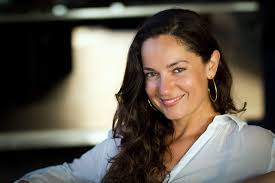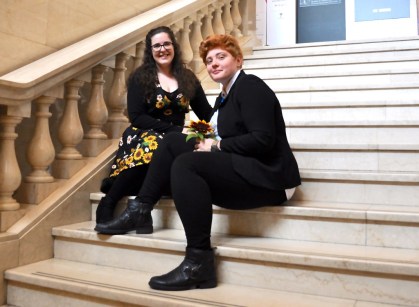 More and more people are telling the stories of western Sydney and regional New South Wales. Felicity Castagna won the Prime Minister’s Literary Award for Young Adult Fiction in 2014 for her debut novel The Incredible Here and Now. With a spare writing style she evokes a picture of the inner life and thoughts of Michael a teenage boy in Parramatta, who undergoes the sudden loss of his older brother and its impact on his family and his own growing up. It’s a gentle story of a quest for understanding and finding his place in the world and is filled with intimate glimpses of his home and family and the places where he hangs out with friends.
More and more people are telling the stories of western Sydney and regional New South Wales. Felicity Castagna won the Prime Minister’s Literary Award for Young Adult Fiction in 2014 for her debut novel The Incredible Here and Now. With a spare writing style she evokes a picture of the inner life and thoughts of Michael a teenage boy in Parramatta, who undergoes the sudden loss of his older brother and its impact on his family and his own growing up. It’s a gentle story of a quest for understanding and finding his place in the world and is filled with intimate glimpses of his home and family and the places where he hangs out with friends.
Yes, there is drama, but the story is more about Michael’s responses to it rather than the events themselves. The Incredible Here and Now has a quiet, meditative quality about it so it will be very interesting to see how it makes the transition to the stage. The National Theatre of Parramatta commissioned Felicity to create a play of the same name from her novel, which opens at Riverside Theatres, Parramatta, on July 13 and runs to  Saturday, July 22. For Felicity, it has been a great learning curve as she works with directors Jeneffa Soldatic, right, and Wayne Harrison. Jeneffa herself grew up in Sydney’s south west, at Ingleburn, and feels that Michael’s teenage experience has many similarities to her own. To make her way in theatre, she had to leave Sydney for New York, where she graduated from the Actors Studio in 2004 and became one of only a few Australians to be accepted as a life member.
Saturday, July 22. For Felicity, it has been a great learning curve as she works with directors Jeneffa Soldatic, right, and Wayne Harrison. Jeneffa herself grew up in Sydney’s south west, at Ingleburn, and feels that Michael’s teenage experience has many similarities to her own. To make her way in theatre, she had to leave Sydney for New York, where she graduated from the Actors Studio in 2004 and became one of only a few Australians to be accepted as a life member.
Felicity says, “I’ve been attending shows at Riverside Theatres for more than 15 years. To see my own work on stage there, in my own community is such a privilege. The support and guidance provided to me by National Theatre of Parramatta, has been incredibly important in developing my own career as a writer and as a voice in the community that I love so much.”
 Performing the lead role of Michael is Bardiya McKinnon, above, (TV’s As the Bell Rings and In Your Dreams) and as Dom, Alex Cubis (TV’s Mako Mermaids and Rake). In addition, The Incredible Here stars Caroline Brazier, Libby Asiack, Olivia Simone, Ryan Peters and Sal Sharah. Information and bookings.
Performing the lead role of Michael is Bardiya McKinnon, above, (TV’s As the Bell Rings and In Your Dreams) and as Dom, Alex Cubis (TV’s Mako Mermaids and Rake). In addition, The Incredible Here stars Caroline Brazier, Libby Asiack, Olivia Simone, Ryan Peters and Sal Sharah. Information and bookings.
 Two young women are taking the concept of storytelling across the regions of NSW to new heights. Natalie Wadwell, left, of south western Sydney and Lucinda Davison of the NSW south coast have been developing a comprehensive website State of the Arts – SOTAau – for the last two years. They “support the next generation of Australia’s storytellers”. It’s a big vision and requires a lot of work and financial investment. This year, Natalie was a recipient of a Layne Beachley Foundation ‘Aim for the Stars Scholarship.’ This money was put towards SOTAau to gain legal support and redevelop their platform. SOTA is also among the first initiatives to be supported by Arts Initiatives Australia – an organisation aimed at making Australian arts more sustainable.
Two young women are taking the concept of storytelling across the regions of NSW to new heights. Natalie Wadwell, left, of south western Sydney and Lucinda Davison of the NSW south coast have been developing a comprehensive website State of the Arts – SOTAau – for the last two years. They “support the next generation of Australia’s storytellers”. It’s a big vision and requires a lot of work and financial investment. This year, Natalie was a recipient of a Layne Beachley Foundation ‘Aim for the Stars Scholarship.’ This money was put towards SOTAau to gain legal support and redevelop their platform. SOTA is also among the first initiatives to be supported by Arts Initiatives Australia – an organisation aimed at making Australian arts more sustainable.
You can now explore the prototype of SOTA’s new platform. Over the next six months they will be shortlisting and targeting five areas, the independent artists within and the organisations servicing them. This will help them learn where the platform can improve and how they can scale it to effectively service the vast geography that is greater western Sydney, regional NSW and the ACT.
They provide publishing opportunities for writers based in suburban and regional areas and access to a growing network of mentors and other creatives to help build sustainable career pathways. SOTA is a social enterprise: a business that generates profit for a social purpose. They say, “Local writers are best positioned to share experiences of art and culture.” Watch this space!






















